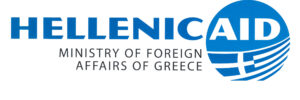The Least Developed Countries Report 2019: “The Present and Future of External Development Finance – Old Dependence, New Challenges” aims at answering the question of whether, and to what extent, available external resources are contributing to the structural economic transformation of LDCs. The report is intended as an input and contribution to the policy debate and deliberations of the forthcoming Fifth United Nations Conference on the Least Developed Countries, in 2021, leading to the adoption of a new plan of action for LDCs to guide policy actions and international cooperation until 2030.
At a juncture when revitalizing international cooperation is as pressing as ever, “The Least Developed Countries Report 2019” discusses the impact of the evolving development finance landscape on the world’s poorest countries. In spite of all the talk about “leaving no one behind”, attempts to redress long-standing flaws in the international financial architecture remain elusive, while the interests and needs of the least developed countries are poorly reflected in deliberations of the international community. Amidst heightened uncertainty and a decelerating global economy, this inaction leaves these countries with inadequate access to long-term development finance. Instead, their debt sustainability concerns loom large as external debt stocks and debt servicing surge, draining resources from development spending.
A formidable challenge facing the least developed countries is their dependence on external development finance. This report re-examines that dependence and contributes to development policy debates by showing the linkages between development goals, structural transformation, sustainable development and human rights. Human rights are scarcely mentioned in those debates, yet the connection is evidenced by the fact that both the objectives of the Istanbul Programme of Action and the Sustainable Development Goals aim at the realization of human rights in general and, specifically, of the right to development. While no single human right has ascendency over the various other human rights, the realization of the right to development creates an enabling environment for the realization of all human rights.
LDCs have progressed too slowly towards achievement of their objectives under the Istanbul Programme of Action and of the Sustainable Development Goals, largely due to scant progress in structural transformation. Here, structural economic transformation is understood to mean the transfer of productive resources (particularly labour, capital and land) from activities and sectors of low productivity to those of higher productivity. One reason for this scant progress is the failure of the international community to create an international economic environment conducive to the structural transformation of LDCs.
The positive growth performance of LDCs since the global financial crisis of 2008/09 has not been sufficient for these countries to accelerate structural transformation or reduce dependence on external resources (i.e. foreign savings) to finance fixed investment and development. Despite a difficult international environment, LDC exports of goods and especially services have seen a significant expansion since the outbreak of the crisis. However, two negative developments overshadow this positive development for LDCs: (a) the very limited diversification or upgrading of their export baskets; and (b) the even more rapid expansion of imports (leading to widening current account deficits).
More information: https://unctad.org/en/PublicationsLibrary/ldcr2019_en.pdf
